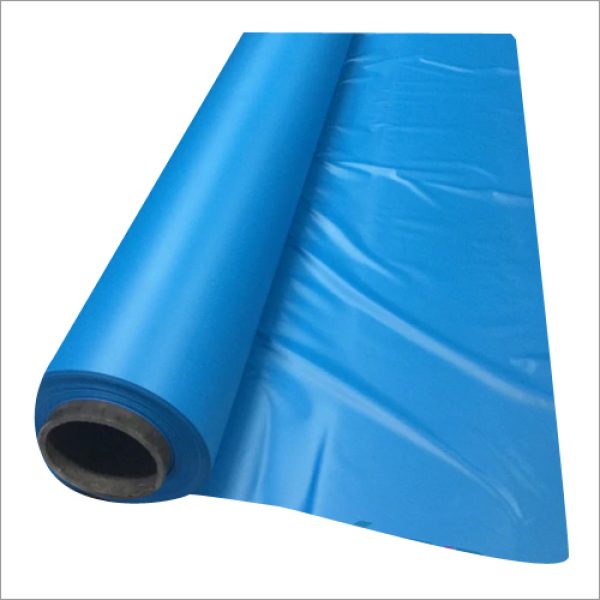Introduction
In the realm of plastic films, one question that frequently surfaces is: “Which is stronger, 4 mil or 6 mil plastic?” This article aims to provide an in-depth exploration of this topic, offering a comprehensive comparison of the strength, durability, and applications of 4 mil and 6 mil plastic.
Understanding the Basics: Mil Thickness in Plastic Films
Before we delve into the comparison, it’s essential to understand what the terms “4 mil” and “6 mil” mean in the context of plastic films. These terms refer to the thickness of the plastic film, with one mil being equivalent to one-thousandth of an inch. Therefore, a 6 mil plastic is thicker, and typically stronger, than a 4 mil plastic.
The Science Behind Plastic Strength
The strength of plastic films is primarily determined by their thickness, measured in mils. However, other factors such as the type of plastic, the manufacturing process, and the presence of any additives can also influence the strength and durability of the plastic film.
4 Mil Plastic: Strength, Durability, and Applications
Despite being thinner, 4 mil plastic offers a surprising amount of strength and durability. It’s commonly used in applications where moderate protection is required.
Strength and Durability of 4 Mil Plastic
4 mil plastic, while thinner than its 6 mil counterpart, is still a robust and durable material. It’s resistant to tearing and puncturing, making it suitable for a variety of applications.
Applications of 4 Mil Plastic
4 mil plastic is versatile and can be used in a wide range of applications. This includes uses such as drop cloths for painting projects, table covers for events, and protective sheeting in construction projects. It’s also used in packaging, where it provides a lightweight yet durable solution for protecting goods during transit.
6 Mil Plastic: Strength, Durability, and Applications
On the other hand, 6 mil plastic, with its increased thickness, provides superior strength and durability. It’s often used in more demanding applications, where a higher level of protection is required.
Strength and Durability of 6 Mil Plastic
6 mil plastic is significantly stronger and more durable than 4 mil plastic. Its increased thickness provides superior resistance to tearing and puncturing, making it ideal for heavy-duty applications.
Applications of 6 Mil Plastic
6 mil plastic is commonly used in applications that require a high level of protection. This includes uses such as vapor barriers in construction, heavy-duty tarps for covering equipment or materials, and protective covers for outdoor equipment. It’s also used in industrial packaging, where its strength and durability provide excellent protection for heavy or bulky goods.
The Difference Between 4 Mil and 6 Mil Plastic
While both types of plastic films have their strengths, the key difference lies in their thickness and, consequently, their durability and applications. The 6 mil plastic, being thicker, is generally stronger and more durable than the 4 mil plastic. However, the choice between the two often depends on the specific application and the level of strength required.
Benefits of 4 Mil Plastic
Despite being thinner and less strong than 6 mil plastic, 4 mil plastic offers several benefits. It’s lighter, more flexible, and often more cost-effective, making it a popular choice for many applications.
Benefits of 6 Mil Plastic
6 mil plastic, while more substantial and less flexible, offers increased strength and durability. It’s resistant to punctures and tears, making it ideal for heavy-duty applications. Although it may be more expensivethan 4 mil plastic, its longevity and robustness often make it a worthwhile investment.
In-Depth: The Manufacturing Process of 4 Mil and 6 Mil Plastic
The manufacturing process of plastic films can significantly impact their strength and durability. Both 4 mil and 6 mil plastic films are typically made using a process called blown film extrusion. This process involves melting the plastic and forming it into a thin tube, which is then cooled and flattened to create the film. The thickness of the film can be adjusted during this process, allowing manufacturers to produce films of different strengths and thicknesses.
The Role of Additives in Plastic Strength
Additives can also play a crucial role in the strength of plastic films. For instance, UV stabilizers can be added to plastic films to increase their resistance to sunlight, while plasticizers can be used to make the film more flexible. By carefully selecting and combining these additives, manufacturers can create plastic films with a wide range of properties and strengths.
The Environmental Impact: 4 Mil vs 6 Mil Plastic
In today’s environmentally conscious world, it’s also important to consider the environmental impact of different types of plastic films. Generally speaking, thicker plastics like 6 mil plastic have a larger environmental footprint due to the greater amount of material used in their production. However, their increased strength and durability can also mean that they need to be replaced less frequently, potentially reducing their overall environmental impact.
Which is Stronger: 4 Mil or 6 Mil Plastic?
In terms of sheer strength and durability, 6 mil plastic generally comes out on top. However, it’s important to remember that the “strongest” plastic isn’t always the best choice. The ideal plastic film depends on the specific application, the environment, and the required durability.
Conclusion
In conclusion, while 6 mil plastic is generally stronger and more durable than 4 mil plastic, the best choice depends on the specific application and requirements. By understanding the strengths and applications of both types of plastic films, you can make an informed decision that best suits your needs.
Please visit our website for more product details https://medposnonwoven.com/product-category/pe-film-materials/

